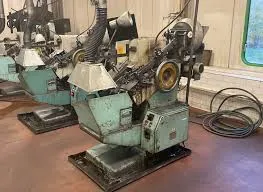
-
 Afrikaans
Afrikaans -
 Albanian
Albanian -
 Amharic
Amharic -
 Arabic
Arabic -
 Armenian
Armenian -
 Azerbaijani
Azerbaijani -
 Basque
Basque -
 Belarusian
Belarusian -
 Bengali
Bengali -
 Bosnian
Bosnian -
 Bulgarian
Bulgarian -
 Catalan
Catalan -
 Cebuano
Cebuano -
 Corsican
Corsican -
 Croatian
Croatian -
 Czech
Czech -
 Danish
Danish -
 Dutch
Dutch -
 English
English -
 Esperanto
Esperanto -
 Estonian
Estonian -
 Finnish
Finnish -
 French
French -
 Frisian
Frisian -
 Galician
Galician -
 Georgian
Georgian -
 German
German -
 Greek
Greek -
 Gujarati
Gujarati -
 Haitian Creole
Haitian Creole -
 hausa
hausa -
 hawaiian
hawaiian -
 Hebrew
Hebrew -
 Hindi
Hindi -
 Miao
Miao -
 Hungarian
Hungarian -
 Icelandic
Icelandic -
 igbo
igbo -
 Indonesian
Indonesian -
 irish
irish -
 Italian
Italian -
 Japanese
Japanese -
 Javanese
Javanese -
 Kannada
Kannada -
 kazakh
kazakh -
 Khmer
Khmer -
 Rwandese
Rwandese -
 Korean
Korean -
 Kurdish
Kurdish -
 Kyrgyz
Kyrgyz -
 Lao
Lao -
 Latin
Latin -
 Latvian
Latvian -
 Lithuanian
Lithuanian -
 Luxembourgish
Luxembourgish -
 Macedonian
Macedonian -
 Malgashi
Malgashi -
 Malay
Malay -
 Malayalam
Malayalam -
 Maltese
Maltese -
 Maori
Maori -
 Marathi
Marathi -
 Mongolian
Mongolian -
 Myanmar
Myanmar -
 Nepali
Nepali -
 Norwegian
Norwegian -
 Norwegian
Norwegian -
 Occitan
Occitan -
 Pashto
Pashto -
 Persian
Persian -
 Polish
Polish -
 Portuguese
Portuguese -
 Punjabi
Punjabi -
 Romanian
Romanian -
 Russian
Russian -
 Samoan
Samoan -
 Scottish Gaelic
Scottish Gaelic -
 Serbian
Serbian -
 Sesotho
Sesotho -
 Shona
Shona -
 Sindhi
Sindhi -
 Sinhala
Sinhala -
 Slovak
Slovak -
 Slovenian
Slovenian -
 Somali
Somali -
 Spanish
Spanish -
 Sundanese
Sundanese -
 Swahili
Swahili -
 Swedish
Swedish -
 Tagalog
Tagalog -
 Tajik
Tajik -
 Tamil
Tamil -
 Tatar
Tatar -
 Telugu
Telugu -
 Thai
Thai -
 Turkish
Turkish -
 Turkmen
Turkmen -
 Ukrainian
Ukrainian -
 Urdu
Urdu -
 Uighur
Uighur -
 Uzbek
Uzbek -
 Vietnamese
Vietnamese -
 Welsh
Welsh -
 Bantu
Bantu -
 Yiddish
Yiddish -
 Yoruba
Yoruba -
 Zulu
Zulu
Understanding the Operation of Thread Rolling Machines in China’s Manufacturing Industry
Understanding the Working of China Thread Rolling Machines
Thread rolling machines play a crucial role in the manufacturing sector, particularly in the production of fasteners like screws, bolts, and nuts. In China, where manufacturing capabilities are vast and varied, thread rolling machines have become an integral part of production lines, enabling manufacturers to produce high-quality threaded components efficiently.
The fundamental principle behind thread rolling is that it transforms round metal rods into threaded parts through a cold working process. Unlike traditional machining methods, which cut away material, thread rolling deforms the material into the desired shape without removing any metal. This method enhances the mechanical properties of the threaded parts, leading to stronger and more durable products.
Operational Mechanism
The working mechanism of a thread rolling machine is relatively straightforward, yet it requires precision and expertise to execute effectively. The process begins with the feeding of a metal rod into the machine. The rod is positioned between two cylindrical rollers, which are specifically designed to form the desired thread profile. These rollers are mounted on shafts that rotate in a synchronized manner.
As the rollers rotate, they grip the metal rod and exert a considerable amount of pressure. This pressure causes the material to flow into the shape of the threaded profile as it passes between the rollers. The cold working process not only shapes the metal but also improves its tensile strength due to the deformation that aligns the metal grain structure.
Thread rolling machines can be categorized into two main types reciprocating and rotary. In reciprocating machines, the rollers move back and forth, while rotary machines utilize rotating rolls to achieve the desired threading. Both types effectively produce threads with high accuracy, but the choice of machine often depends on production volume and complexity of the threaded designs.
china thread rolling machine working

Advantages of Thread Rolling
Manufacturers in China favor thread rolling machines for several reasons. One significant advantage is the efficiency of the process. Thread rolling can produce parts at a much faster rate compared to traditional methods, significantly reducing cycle times. Additionally, because no material is removed during the rolling process, the utilization of raw materials becomes more efficient, leading to cost savings.
Another notable benefit is the enhanced mechanical properties of the finished products. The cold working process increases the hardness and strength of the threads, which is particularly important in applications where durability is critical.
Moreover, thread rolling machines can accommodate a wide range of materials, including steel, aluminum, and brass, making them versatile tools in various manufacturing settings. Chinese manufacturers have adopted advanced technology, incorporating CNC (Computer Numerical Control) systems into their thread rolling machines, further increasing precision and automation, which enhances productivity.
Applications
The applications of thread-rolled components are extensive across various industries. They are commonly used in automotive, aerospace, and construction industries, where reliability and strength are paramount. The demand for high-quality, precision-engineered fasteners continues to rise, and thread rolling machines in China are essential in meeting these demands.
In conclusion, thread rolling machines are vital components of modern manufacturing in China, known for their efficiency, cost-effectiveness, and the production of high-quality threaded parts. As industries continue to evolve and the demand for strong, reliable fasteners grows, the role of these machines is likely to expand even further, ensuring that manufacturers can keep pace with global standards and innovation. The future of thread rolling in China looks promising, driven by technological advancements and a commitment to quality.
